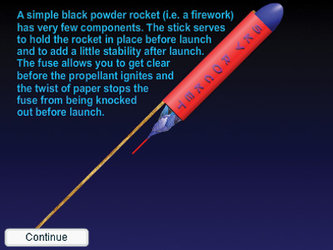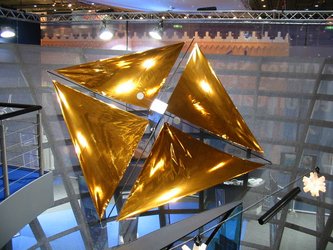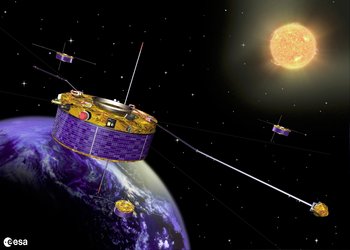Solid and liquid fuel rockets
Solid fuels burn hot but things could be hotter, also they tend to produce lots of relatively large particles (that’s why they produce so much smoke when they are fired). One solution is to use a liquid fuel and propellant. Liquid hydrogen burning with liquid oxygen burns at a temperature of nearly 3,000 K and the combustion products are individual water molecules. Liquid hydrogen however has a low density and so requires large tanks to store it, for this reason kerosene (aviation fuel) burning in liquid oxygen is frequently used for launchers that are still low in the atmosphere.
Animation of a solid fuel motor showing simple structure and the only control to burn rate being the structure of the propellant structure:

Advantages of liquid fuel/oxidant mixes are that the thrust can be controlled (throttled) and that the engines can even be shut done and re started at a later stage. In addition the energy density (Joules per kilogram of propellant) tends to be high and that, as a result of the high combustion temperature, the specific impulse (impulse [in Newton seconds] per kilogram of propellant) is very large. A modern solid fuel rocket has a specific impulse of up to approximately 2500 N s kg-1 whilst a good liquid fuel rocket can produce up to 4500 N s kg-1. It is common practice to take a shortcut in the units, at ground level one kg of propellant weighs a little under 10 N and these two figures are cancelled out. The two figures just quoted become 250 s and 450 s.
The biggest disadvantage of liquid fuels is that the need for pumps, piping and separate storage for the fuel and oxidant means that extra mass has to be carried by the launch vehicle.
Many launch vehicles get around the problems by using a combination of different rocket motors. The Ariane 5 and the space shuttle both get most of their thrust at low altitude from very high thrust (but low specific impulse) solid fuel boosters and then use high specific impulse but lower thrust) liquid hydrogen/liquid oxygen motors at higher altitudes and in space. The largest rocket ever flown beyond the trialling stage was the Saturn V that launched the Apollo missions to the Moon. This used liquid fuel engines at all stages but used relatively 'energy dense' kerosene/liquid oxygen at low altitude and liquid hydrogen/liquid oxygen at high altitude and in space.











